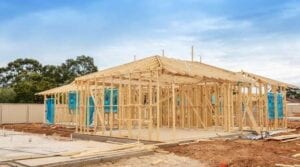A side-effect of the HomeBuilder scheme

In a bid to support jobs in the residential construction sector, earlier this month the Government announced the new HomeBuilder program.
However, analysis from CoreLogic* warns this stimulus will only bring construction forward, rather than create additional demand for construction work.
Under the HomeBuilder programme all eligible owner-occupiers (including first home buyers) can apply for a grant of $25,000 to build a new home or substantially renovate an existing home.
The offer is open until 31 December 2020 and construction must commence within 3 months of the contract date.
While there are stipulations on income (single applicants can earn up to $125,000 per annum, and couples up to $200,000 ), the renovation must be worth between $150,000 and $750,000.
It’s the renovation value which, as pointed out by Eliza Owen at CoreLogic, largely creates stimulus for those that were already planning to build and renovate.
“This side-effect from housing stimulus has actually been seen before – and it has a name: a vacuum effect,” she says.
The vacuum effect
In her analysis, Eliza says a vacuum effect describes housing stimulus bringing forward a planned decision to purchase property. It reflects a surge in buyer activity soon after housing grants are made available, and a significant drop in activity thereafter.
“The implication is that rather than stimulating sustained, new demand, stimulus is simply bringing forward activity to a certain date, where it would likely have occurred over time anyway,” she says.
She points out the phenomenon is prominent around the first home owner grant in 2000, when a $7,000 grant, designed to soften the blow for first home buyers around an introduction of the GST was introduced. There was a peak in buying after the grant was introduced and it quickly drops before the programme ends.
The ‘boost’ to the first home owner grant, which was a temporary, additional $7-14,000 grant in the wake of the Global Financial Crisis, showed a similar outcome.
Eliza thinks the HomeBuilder package may be limited in its ability to deliver new construction work, because it relies on decisions to purchase and renovate property in a highly uncertain economic climate.
To put it another way, homeowners who will use this stimulus were planning to do the work eventually, so the construction industry would have gotten the work anyway; it’s not new work.
With this in mind, Elize believes it hasn’t created demand for new houses and renovations, and this is one of the reasons consensus is mounting around social housing being a more efficient use of government expenditure on housing, because it guarantees the upgrade and building of homes through direct expenditure.
However, what it does mean is those working in the residential construction industry will continue to work and the Government is also hoping the stimulus could help people who lost their homes in the summer bushfires.
For more information on the HomeBuilder programme, including eligibility, visit the Treasury Coronavirus Economic Response website.
If you have any queries about selling your house at this time, or would like a free, no obligation quote, give us a call on 02 4954 8833. Or send us an email to: mail@apnewcastle.com.au – we’d love to hear from you.
And don’t forget to check out our Facebook page for handy tips on selling your property or what to look for when buying a property.
* https://www.corelogic.com.au/news/vacuum-effect-and-its-implications-homebuilder-scheme